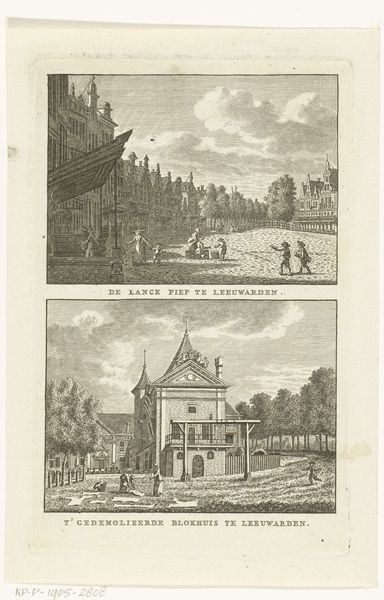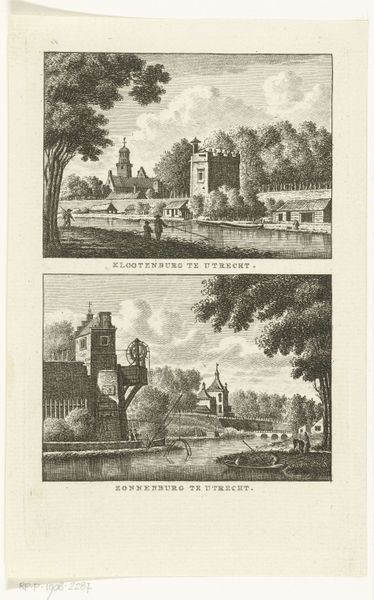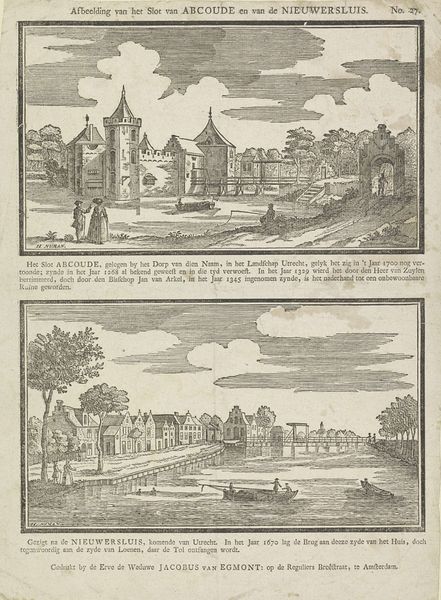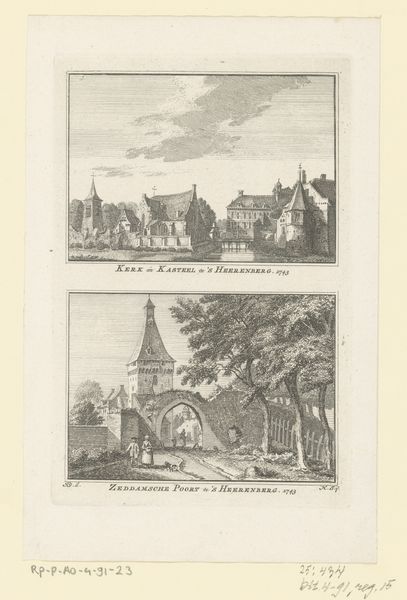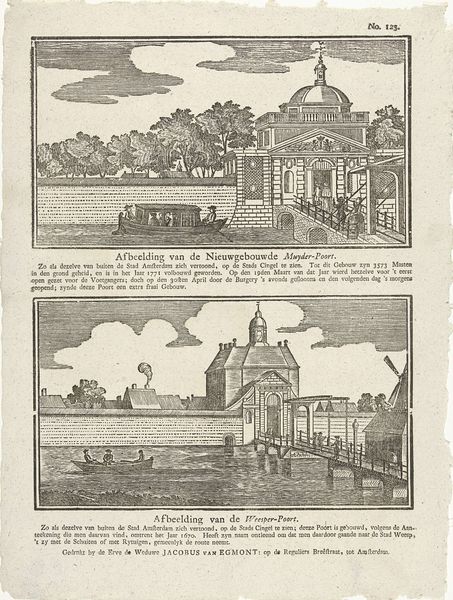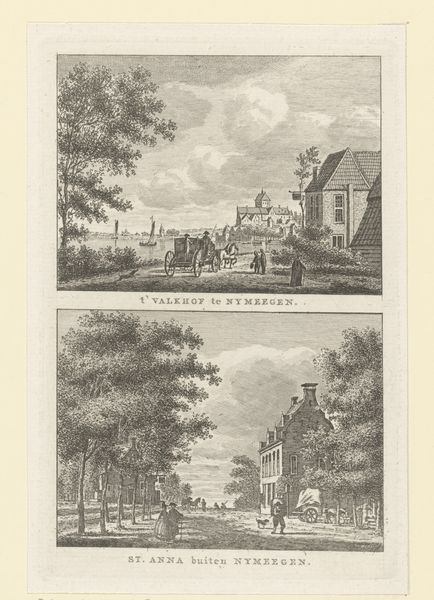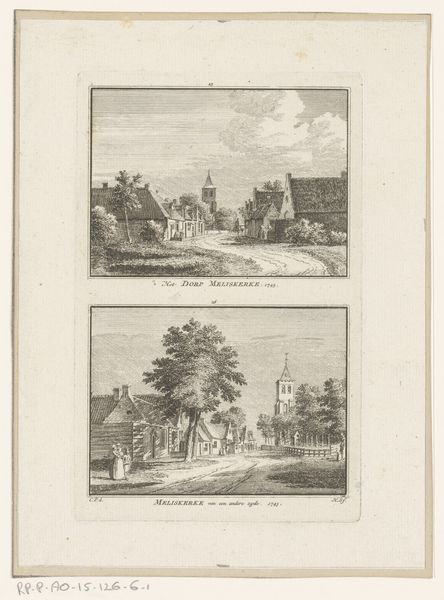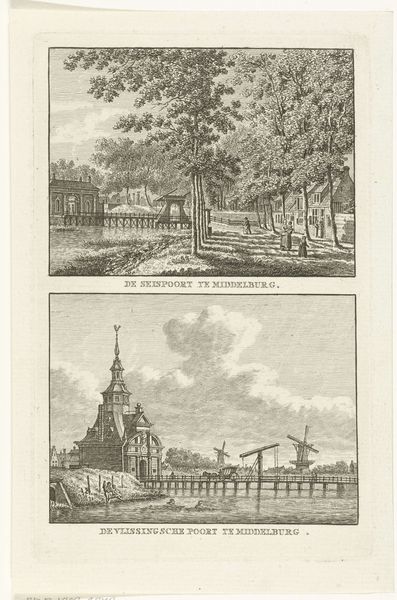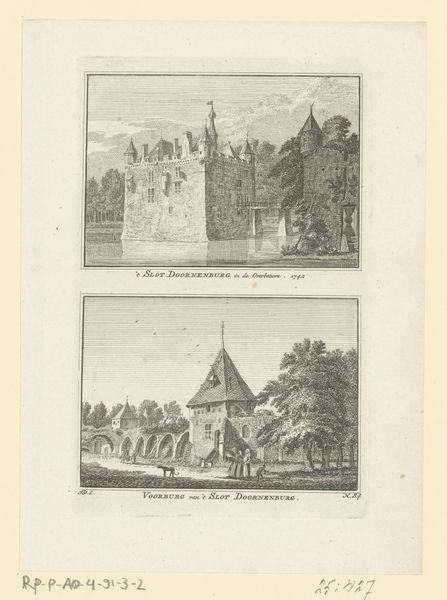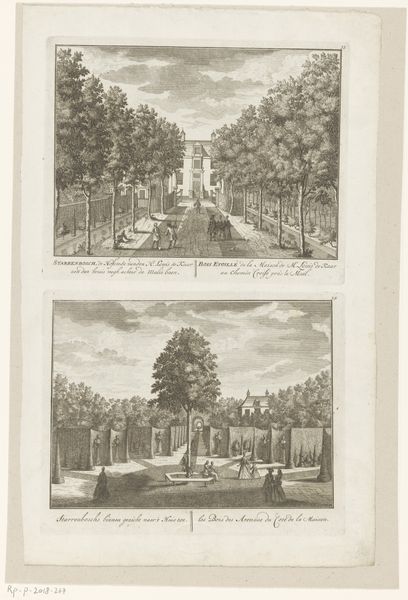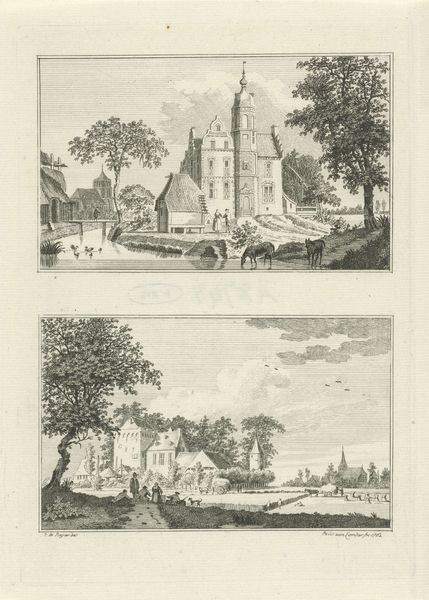
Gezichten op de Oosterpoort en de Westerpoort te Franeker 1786 - 1792
0:00
0:00
carelfrederikibendorp
Rijksmuseum
Dimensions: height 172 mm, width 111 mm
Copyright: Rijks Museum: Open Domain
Curator: This print presents two cityscapes of Franeker. Carel Frederik Bendorp, the artist, created "Gezichten op de Oosterpoort en de Westerpoort te Franeker" between 1786 and 1792. These engravings depict the Oosterpoort, or Eastern Gate, and the Westerpoort, Western Gate, of this Dutch city. Editor: I am immediately struck by the contrast between the two views. The Oosterpoort seems more open and pastoral with figures strolling by the water. The Westerpoort, however, appears more enclosed and integrated into the city itself. Both have a peaceful feeling, but it feels more enforced in the bottom depiction. Curator: The scenes certainly evoke distinct atmospheres. The placement of each gate reflects the social and economic life that flowed through them. Consider the Baroque influences in landscape depiction at this time, a sense of harmony and order in the environment became critical. Editor: Yes, it's interesting how Bendorp frames the gates. In the upper image, you see what looks like a more leisurely public space with people near the canals, while the lower cityscape looks like part of someone's back garden! I wonder about who had access to these different parts of the town. Curator: Indeed. The prints offer more than just visual representations; they invite inquiries into Franeker’s social fabric and spatial politics. Bendorp's careful detailing captures elements of commerce and daily life from that era in the Netherlands, each telling their own story. Editor: This piece prompts so many questions about identity and access within urban environments and their legacy even now. It's remarkable how what may seem like just picturesque images opens to critical explorations of historical power dynamics. I see a world behind the details here. Curator: Exactly. These images help connect us to both an awareness of our history as well as an insight into modern day problems. It's fascinating how this single print from the Rijksmuseum offers avenues into Dutch life, the impact of the Baroque style on how the population viewed the landscape and also questions regarding inequalities in our own era. Editor: It reminds us to examine who benefits from constructed and "natural" beauty in our shared world.
Comments
No comments
Be the first to comment and join the conversation on the ultimate creative platform.
